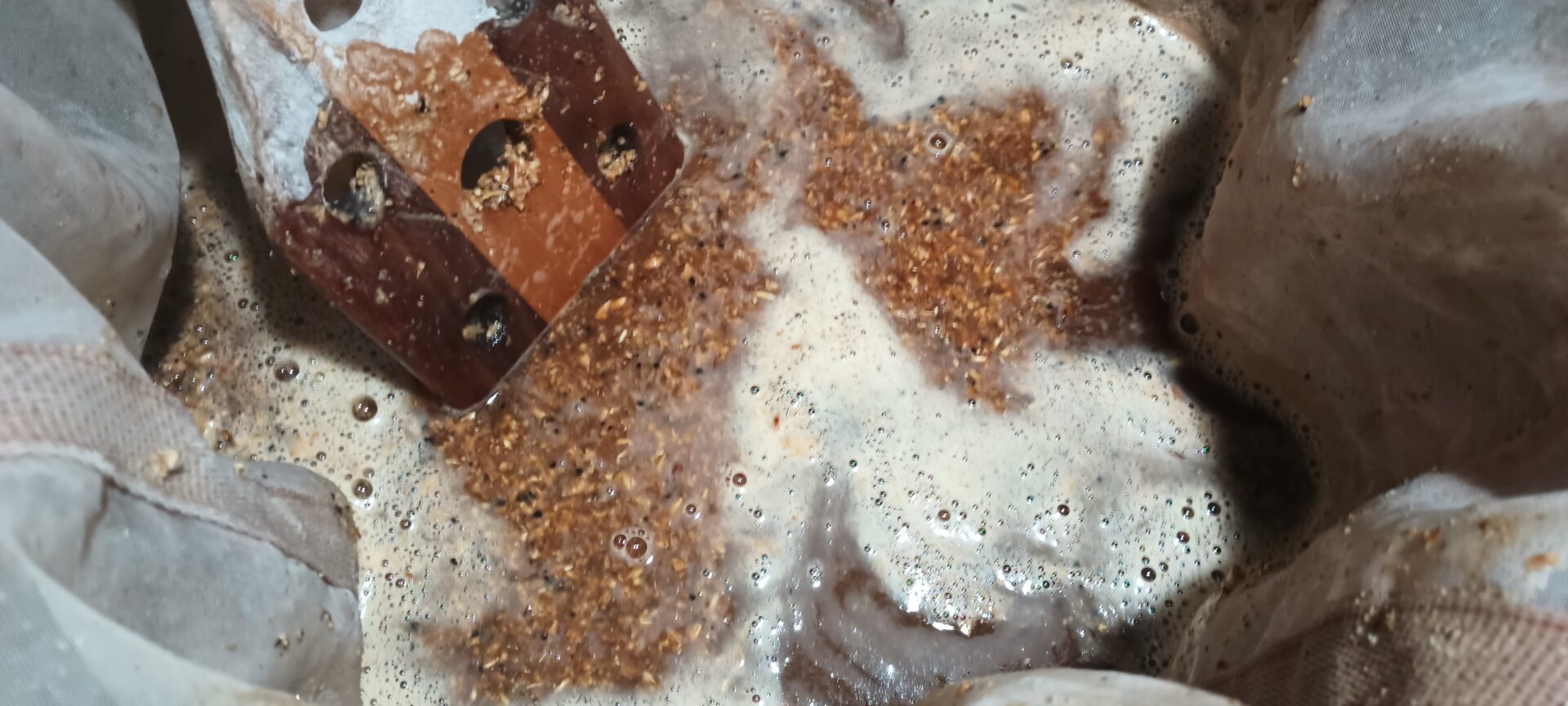
Ingredient Highlight – Sugar Creek Crystal 160
Sugar Creek Malt Co. is a family-owned and run malthouse located in Boone County, Indiana. I have used their Ye Olde base grain for several different beers and have thought that the character provided was definitely more complex than the Maris Otter that I’d used in previous recipes. Knowing that base grain was at least as good as the Mecca Grade Lamonta that I’ve come to love I’ve wanted to give other grains from Sugar Creek a try. I just so happened to have a pound of their Crystal 160 on hand and no dark beers on tap.
The malt house says that the Crystal 160 provides huge aromas of dried fruit, burnt sugar and graham crackers. Sounds awesome but will we get that? I’m also using a pretty old packet of yeast, more on that later, so I’ve called this beer The Murtaugh Rule.
Kinda an English Porter
I put together an English Porteresque recipe using some grains I had on hand:
- 6 lbs Mecca Grade Lamonta
- 2 lbs Briess Munich
- 1 lb Sugar Creek Crystal 160
- 8 oz Chocolate Wheat
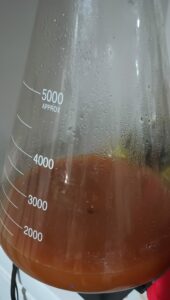
The yeast I chose is an interesting story. I had five two-year-old packets of yeast from Bootleg Biology in my refrigerator. I was curious if I could resurrect them so I created five 300ml starters in mason jars. All five packets showed serious signs of life. Since one of them, their Classic English strain, was among them I decided to use that. I put together an additional 1L starter on my stir plate and poured in the original 300L starter I had created. Look for the other yeasts, including two Brett strains, in future beers.
I kept the hopping simple:
- 0.5 oz Magnum- 22.8 IBU (Boil, 60 min)
- 1 oz East Kent Golding – 7.2 IBU (Boil, 10 min)
The Brew Day
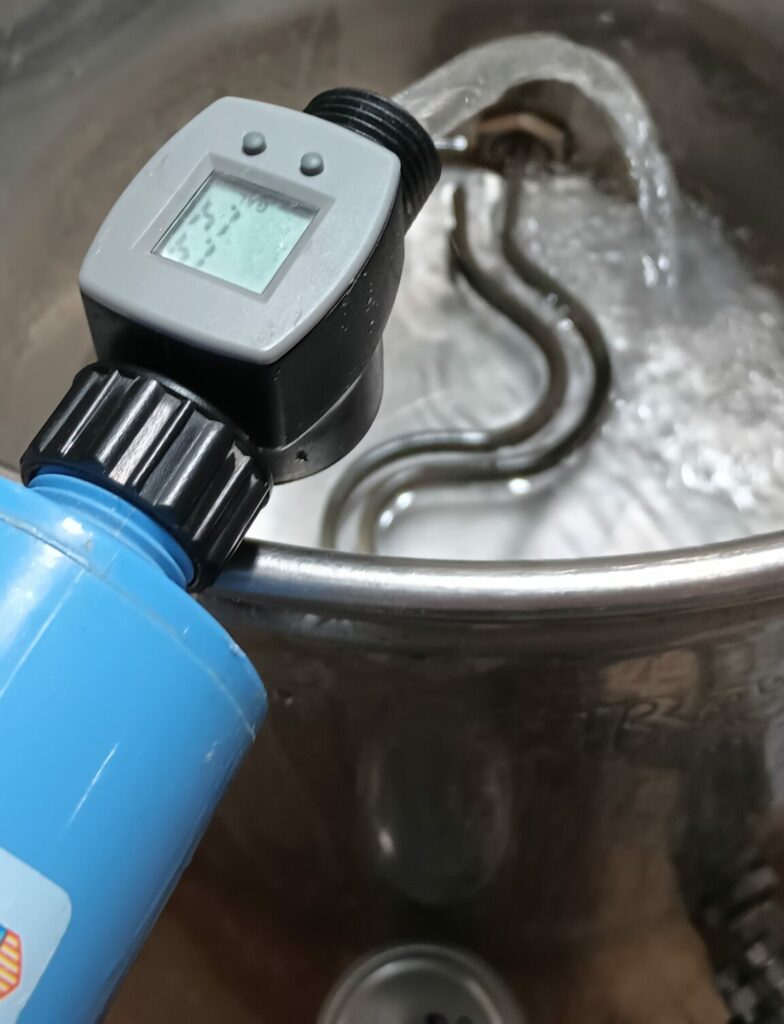
I got my electric brewing system running with about 7.8 gallons of treated water and heated it up to my strike temperature. Even though I use electric, because the probe is located under the grain level, if I don’t put the grain in at a higher temp it will drop and won’t get back up to mash temp until well into the mash. I stirred all the grain into the water ensuring there were no dough balls.
After 10 minutes I took a PH reading that showed 5.36 which was just a little higher than the 5.3 I was targeting. While I was recirculating I stirred every 10 to 15 minutes to keep the temps even in the grain bed. The temps stayed right around the 156F I was targeting.
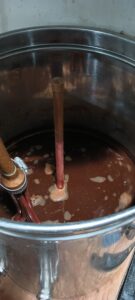
At the end of the mash, I pulled the grain basket and squeezed the grain bag. I took a gravity reading and it was 1.045 about .005 more than expected. After an uneventful boil, hop additions and chill I had a final gravity of 1.056 which is .007 more than projected. I’m not sure why it came in so much higher. My numbers are usually barely off if at all but it’s possible that the smaller amount of grain than usual allowed some better conversion.
The wort was transferred to an Anvil Stainless Brew Bucket and added the fermentation temperature to rest at 68F for the duration of fermentation. Fermentation activity was seen within 12 hours.
What’s Next – Sensory
My goals with this brew are the following:
See what this darker crystal brings to a simple dark beer grain bill.
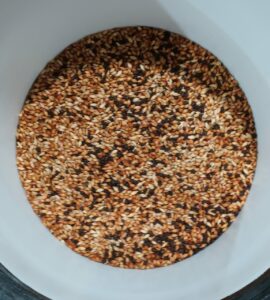
I would normally add some other crystal malts like Extra Special or Special B to a beer like this but I wanted the only non-roasted specialty grain to be the Crystal 160. I hope that the dried fruit and graham crackers really come out.
Flaked Oats or Barley would be something else that I’d usually add to this beer. I’m curious how much body a darker crystal malt will add to the perception. Higher percentages of crystal malt are linked to a higher perceived body but will one kilned this high also provide that character?
How does the yeast perform?
That yeast was really old and even the person I contacted at Bootleg Biology was surprised at my results from the initial set of starters. I was happy to see solid activity by the morning after brewing but it remains to be seen if we see the attenuation, flocculation and character that we’d expect from an English strain. If there are any fermentation flaws it will also affect the grain portion of the experiment so I’m crossing my fingers that it does its job.
Very Excited
I can’t wait to taste the results of this experiment. At the time of writing the beer has been in the fermenter for two days. My best guess is that in another 10 days or so I will be kegging it. Look for a follow-up article on the sensory results sometime around then. For those that want to brew this beer or are just curious, I’ll leave the full recipe details below.
Recipe
Calculated at 78%
Water
- Calcium – 100 ppm
- Sodium – 53.1 ppm
- Chloride – 60 ppm
- Magnesium – 10 ppm
- Sulfate – 11.3 ppm
- Bicarbonate – 156 ppm
- Target PH – 5.3
Fermentables
- 6 lbs Mecca Grade Lamonta
- 2 lbs Briess Munich
- 1 lb Sugar Creek Crystal 160
- 8 oz Chocolate Wheat
Mash Temp: 156F (Strike Temp 162F)
Boil: 60 Minutes
Hops
- 0.5 oz Magnum- 22.8 IBU (Boil, 60 min)
- 1 oz East Kent Golding – 7.2 IBU (Boil, 10 min)
Yeast
- Bootleg Biology Classic English – 2 Years Old 300 ml stater stepped up to 1L
Expected Stats
- Yield – 5.5 Gallons
- OG – 1.049
- FG – 1.014
- IBU – 30
- SRM – 28.4
- ABV – 4.6%
- Balance – 0.616